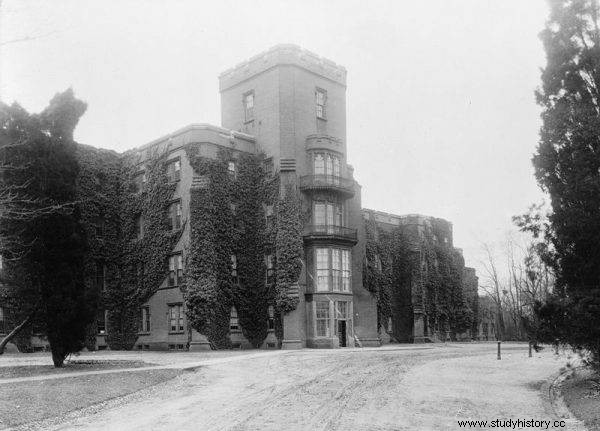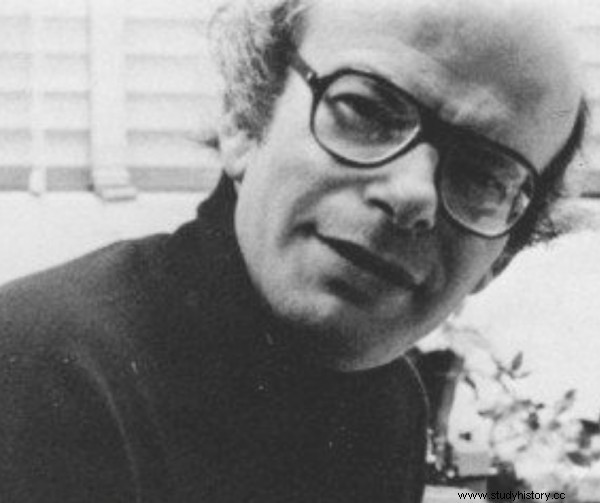Can a mentally healthy person be diagnosed and treated for severe mental illness? Of course! This was proved by Rosenhan's experiment.
David Rosenhan was an American psychologist. He lectured, among others at Princeton University, Pennsylvania, and as a guest at Oxford. However, he made history thanks to an experiment which he questioned and criticized the American diagnostics of mental illness. And also how to treat them.
Assumptions of the experiment
In 1972, Rosenhan assembled a group of seven volunteers. With him, were to simulate hallucinations in order to get into treatment facilities for the mentally ill . The group of pseudopatients included three psychologists, a pediatrician, a psychology student, a painter and a housewife. They applied to twelve different types of mental illness diagnosis facilities in five different states. Apart from changed names, surnames and places of work, they provided all other data about themselves in accordance with reality. As for their ailments, they were limited to one - hearing voices in their heads . They claimed it was a rather incomprehensible hype most of the time. They only occasionally picked up words like "empty" or "leaky" in it.
Rosenhan hoped that at the stage of diagnosis one of the patients would be rejected and sent back with a receipt. Unfortunately, he miscalculated in this topic. Doctors found disorders in both him and the remaining seven. And not just any! One person was diagnosed with manic-depressive syndrome, and the others - schizophrenia. In this way, all eight ended up in the second stage of the experiment, which was hospitalization.
Houses that make you crazy?
The participants of the experiment were ordered to act normally after being admitted to the facility and to say that they were okay. In addition, they were to be polite, calm and logical to medical staff. Their goal was to convince the doctors as soon as possible that they were mentally healthy and could leave the hospital on their own. This task turned out to be not easy. No one on staff found out about the situation.
As time passed, the behavior of employees towards the pseudopatients became more and more brutal. One of them was tied to the bed for several long hours after he pointed out to a medical staff member that his behavior was inappropriate. After this incident, a lawyer was hired who was to intervene immediately in case of further problems.

St. Elizabeth in Washington. One of the hospitals to which participants in Rosenhan's experiment were admitted.
The participants of the experiment were administered antipsychotic drugs. They did not take them and spit them out secretly, as their use could disturb the objectivity of the experiment. Besides, they were not the only ones who got rid of medications in this way. Many other patients behaved similarly, and some of the staff were well aware of, but did not respond. Interestingly, it was some of the patients who found out that they were dealing with simulants or (as some of them believed) journalists who tricked into the centers and now secretly gather material for the article. These suspicions were dictated by the pseudo-patients regularly taking notes about the course of the experiment. Most caregivers did not respond to these revelations. They were noticed in only one center where David Rosenhan himself was staying. How has been reacted? Expanding his diagnosis to include graphomania.
The participants of the experiment spent in psychiatric hospitals from several to several dozen days , on average:3 weeks. Each of them was released from the center only after he himself admitted being mentally ill. Back then, the doctors considered them cured and let them go.
Inconvenient requests
Rosenhan published the results of the experiment in the journal "Science" in the article "On being sane in insane places". The conclusions it contained were appalling! It turned out that contact of psychiatrists with patients was limited to a maximum of seven minutes a day although the hospitalized ones themselves needed much more. In addition, he was superficial. Medics often provided answers that had nothing to do with the questions asked, for example, "when the patient asked when he would be able to go for a walk, the doctor greeted him and asked how he was doing today, and then went on completely indifferently."
The rest of the medical staff fared no better. Nurses spent almost all shifts in glass service rooms separated from patients. Employees ignored the presence of their charges. They openly laughed at their problems and did not treat them as rational people because of their ailments. There was also abuse of force against patients. Beating was a punishment for bad behavior. Hospitalized patients also did not have the right to privacy. Staff at the centers looked at their personal belongings and accompanied them during their physiological activities, as many toilets did not have doors.

David Rosenhan
Rosenhan concluded that medical personnel fear the sick and do not trust them and therefore behaves in this way towards them. The psychologist also did not believe in the rightness of the boundless belief in the effects of psychotropic drugs, which were supposed to work in every situation. In his opinion, more important were observation, conversation and longer time spent by doctors with patients.
Learning from mistakes?
The results of the experiment hit psychiatric facilities in the US hard. One of them, a well-known and respected hospital, even asked Rosenhan to check the credibility of their diagnoses. Within three months, the scientist was to send volunteers to the center. Their task would be to confirm that it is impossible to misdiagnose in this particular facility. The psychologist agreed to participate in the study.
Of the 193 patients diagnosed during this period, the hospital doctors considered 41 false and 42 suspicious . After the experiment was over, David Rosenhan informed the facility that he had not sent a single pseudopatient to them.
